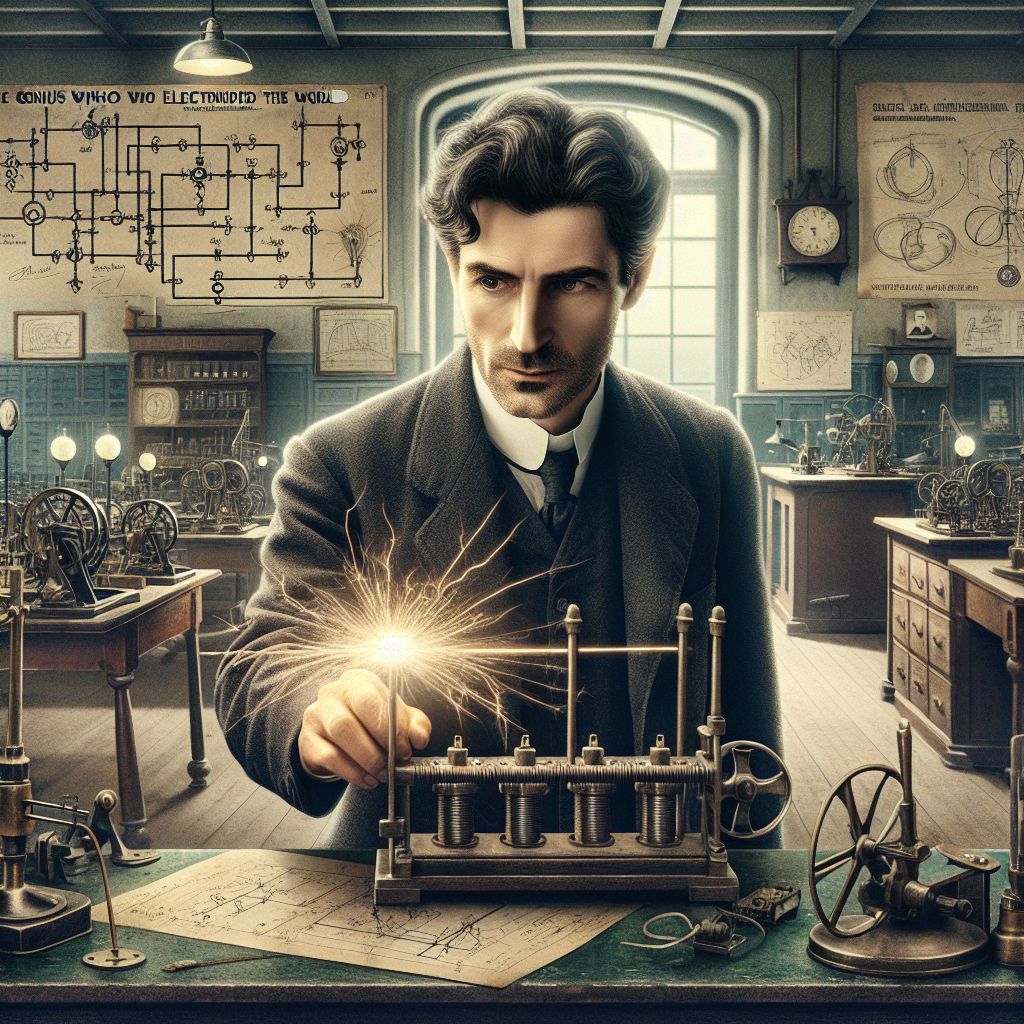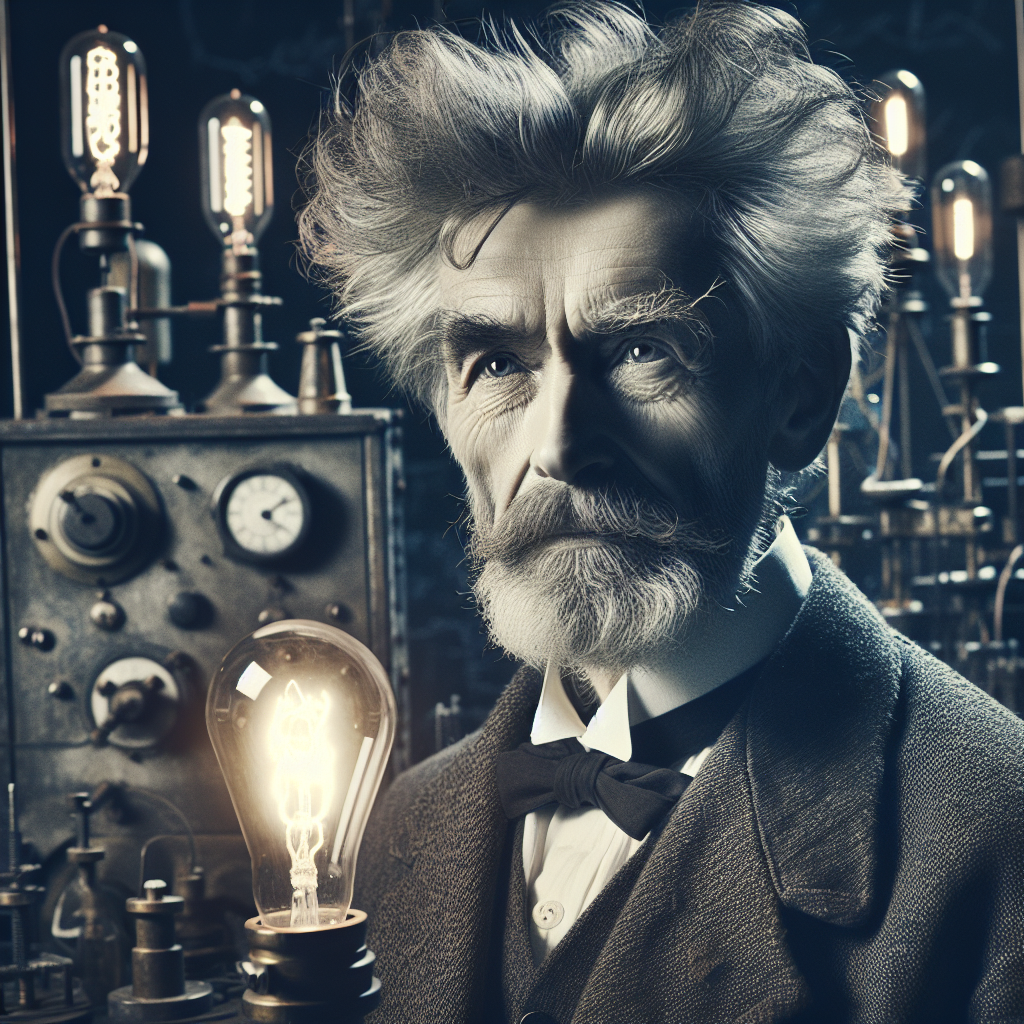Nikola Tesla, often dubbed the “Wizard of Electricity,” was a visionary inventor whose innovations transformed the world. Born in 1856 in Smiljan, Croatia, Tesla’s work laid the foundation for modern electrical engineering and continues to influence technology today. Let’s delve into the life and achievements of this extraordinary figure.
Early Life and Education
Tesla was born into a Serbian family in the Austrian Empire. His father, Milutin Tesla, was a priest and writer, while his mother, Georgina Đuka Tesla, was adept at creating household devices. From an early age, Tesla showed an incredible aptitude for mathematics and physics, often solving complex problems in his head.
Tesla attended the Technical University of Graz and later the Charles-Ferdinand University in Prague. Though he never completed his degree, his education provided a solid foundation for his future work.
Arrival in America
In 1884, Tesla moved to the United States with little more than the clothes on his back and a letter of introduction to Thomas Edison. He started working for Edison, helping to improve the company’s direct current (DC) generators. Despite their different approaches and philosophies, Tesla and Edison initially collaborated. However, Tesla’s vision for alternating current (AC) power soon clashed with Edison’s commitment to DC.
The War of the Currents
The late 19th century saw a fierce competition between Edison’s DC system and Tesla’s AC system. Edison promoted DC as the safer option, while Tesla, with the backing of industrialist George Westinghouse, championed AC for its efficiency over long distances.
Tesla’s AC system eventually proved superior, culminating in the 1893 Chicago World’s Fair, where the Westinghouse Corporation used AC to illuminate the exposition. This success led to the widespread adoption of AC power, which remains the standard today.
Innovations and Patents
Tesla’s contributions to science and technology were vast and varied. He held over 300 patents, many of which were fundamental to the development of modern electrical systems. Some of his most notable inventions include:
Alternating Current
Tesla’s work on AC power revolutionized the way electricity is generated and distributed. His polyphase AC systems allowed for the efficient transmission of electricity over long distances, reducing the need for numerous power plants.
Tesla Coil
Invented in 1891, the Tesla coil is a high-voltage transformer capable of producing lightning-like electrical discharges. This invention became a foundation for future wireless communication and broadcasting technologies.
Radio and Wireless Communication
While Guglielmo Marconi is often credited with inventing the radio, Tesla’s work on wireless transmission laid the groundwork for modern radio technology. In 1943, the U.S. Supreme Court recognized Tesla’s patents as preceding Marconi’s, solidifying Tesla’s role in the development of radio.
Induction Motor
Tesla’s invention of the induction motor, which runs on AC, revolutionized machinery and appliances. This motor is still used in many household and industrial applications today.
X-ray Technology
Tesla conducted early experiments with X-rays, exploring their potential for medical imaging. Though Wilhelm Röntgen is credited with discovering X-rays, Tesla’s research contributed significantly to the field.
The Wardenclyffe Tower
One of Tesla’s most ambitious projects was the Wardenclyffe Tower, intended as a global wireless communication and power transmission system. Located in Shoreham, New York, the tower was designed to transmit messages, telephone calls, and even electricity wirelessly across great distances.
Despite its potential, the project faced financial difficulties and was never completed. The Wardenclyffe Tower was dismantled in 1917, marking one of Tesla’s most significant disappointments.
Later Life and Legacy
In his later years, Tesla continued to invent and experiment, although his financial situation deteriorated. He lived in various New York City hotels, often leaving behind unpaid bills. Despite these struggles, he remained dedicated to his work and vision.
Tesla died on January 7, 1943, in the New Yorker Hotel. Though he died penniless and largely forgotten by the public at the time, his legacy has since been recognized and celebrated.
Contributions to Modern Technology
Tesla’s pioneering work laid the groundwork for many modern technologies. His innovations in AC power, wireless communication, and electrical engineering have had a lasting impact on the world. Today, Tesla is celebrated as one of the greatest inventors and visionaries in history.
Tesla’s Cultural Impact
Tesla’s life and work have inspired countless books, films, and even a car company named in his honor. The electric car manufacturer Tesla, Inc., founded by Elon Musk, pays homage to the inventor’s contributions to science and technology.
Nikola Tesla’s genius and vision transformed the world in ways that are still felt today. From his work on alternating current to his explorations of wireless technology, Tesla’s inventions continue to shape our modern world. He remains a symbol of innovation, perseverance, and the power of imagination.

Unfinished Projects and Theoretical Work
Beyond his successful inventions, Tesla had many ideas and projects that, although never realized, showcased his extraordinary vision. These projects ranged from advanced theories on energy transmission to concepts for improving everyday life.
Death Ray
One of Tesla’s most controversial inventions was his so-called “Death Ray,” a particle beam weapon that he claimed could bring down aircraft and halt armies. Although the invention never came to fruition, the idea of a directed-energy weapon fascinated many, influencing both science fiction and modern military research.
Wireless Power Transmission
Tesla envisioned a world where power could be transmitted wirelessly across the globe, reducing the need for electrical infrastructure. His experiments with the Wardenclyffe Tower were an attempt to realize this vision. Although the project was abandoned, modern research into wireless charging and energy transmission continues to build on Tesla’s initial ideas.
Earthquake Machine
Tesla once claimed to have created a small mechanical oscillator that, when attached to a structure, could induce vibrations matching the natural frequency of the building, potentially leading to structural failure. This “earthquake machine” demonstrated Tesla’s understanding of resonance and mechanical vibrations, even though the practical applications of such a device were highly speculative.
Artificial Lighting
Tesla experimented with various forms of artificial lighting, including fluorescent and neon lights. His innovations in this field paved the way for more efficient and sustainable lighting solutions, many of which are in widespread use today.
Tesla’s Impact on Popular Culture
Tesla’s enigmatic personality and groundbreaking inventions have made him a popular figure in various cultural forms, from literature to films and even video games. His life story, marked by brilliant successes and notable failures, continues to inspire and intrigue people worldwide.
Literature and Films
Tesla’s life has been the subject of numerous biographies and novels. Films such as “The Prestige” (2006), where he was portrayed by David Bowie, and “Tesla” (2020), starring Ethan Hawke, depict different aspects of his extraordinary life and work. These portrayals, while sometimes dramatized, help keep his legacy alive in the public consciousness.
Tesla in Science Fiction
Many science fiction works have drawn inspiration from Tesla’s ideas and inventions. His work on wireless energy transmission and high-voltage experiments has found its way into countless novels and TV shows, often portraying Tesla as a brilliant but misunderstood scientist ahead of his time.
Commemorations and Tributes
Numerous tributes commemorate Tesla’s contributions to science and technology. The Nikola Tesla Museum in Belgrade, Serbia, houses many of his personal artifacts and inventions. In addition, Tesla’s name has been given to various scientific units, awards, and even a minor planet (2244 Tesla).
Personal Traits and Philosophies
Tesla’s personality was as fascinating as his inventions. He was known for his eccentricities and strict routines, many of which contributed to his public image as a “mad scientist.”
Work Ethic and Lifestyle
Tesla was a prolific worker, often spending more than 20 hours a day in his laboratory. He claimed to need only a few hours of sleep each night and was known for his incredible focus and dedication to his work. Tesla maintained a largely vegetarian diet and abstained from alcohol and tobacco, believing that a healthy lifestyle was essential for intellectual productivity.
Beliefs and Predictions
Tesla had a profound belief in the interconnectedness of all things. He often spoke about the potential for science and technology to improve human life and predicted many future advancements, including the development of wireless communication, robotics, and renewable energy. His predictions, many of which seemed fantastical at the time, have since proven remarkably accurate.
Relationships and Social Life
Tesla never married and had few close relationships, dedicating most of his time to his work. He formed friendships with several prominent figures of his time, including Mark Twain and John Muir. Despite his reclusive nature, Tesla was known for his charm and wit, often captivating audiences with his demonstrations and lectures.
Legacy and Influence
Tesla’s influence extends far beyond his lifetime, impacting various fields such as electrical engineering, radio technology, and even modern computing. His visionary ideas continue to inspire scientists, engineers, and inventors around the world.
Honors and Memorials
In recognition of his contributions, Tesla has been honored with numerous memorials and dedications. These include the Tesla Science Center at Wardenclyffe, efforts to restore his last laboratory, and various monuments and plaques around the world.
Tesla’s Ongoing Relevance
Tesla’s work remains relevant today, with ongoing research in fields he pioneered. Innovations in renewable energy, wireless communication, and electric vehicles all trace their roots back to Tesla’s pioneering efforts. The company Tesla, Inc., named in his honor, continues to push the boundaries of technology, embodying Tesla’s spirit of innovation and progress.
Conclusion
Nikola Tesla’s life and work exemplify the spirit of innovation and the relentless pursuit of knowledge. His contributions to science and technology have had a profound and lasting impact, shaping the modern world in countless ways. As we continue to explore new frontiers in science and technology, Tesla’s legacy serves as a reminder of the power of imagination and the importance of thinking beyond the limits of conventional wisdom.
Tesla’s story is one of brilliance, resilience, and a vision for the future that continues to inspire and guide us today. He was, and remains, a true wizard of electricity.
By understanding and appreciating the life and achievements of Nikola Tesla, we gain not only a deeper respect for his contributions but also inspiration to pursue our own innovative ideas and dreams. Tesla’s legacy is a testament to the enduring power of human ingenuity and the endless possibilities that lie ahead.
References
- Cheney, Margaret. Tesla: Man Out of Time. Simon and Schuster, 2001.
- Carlson, W. Bernard. Tesla: Inventor of the Electrical Age. Princeton University Press, 2013.
- Seifer, Marc J. Wizard: The Life and Times of Nikola Tesla. Citadel Press, 1996.
